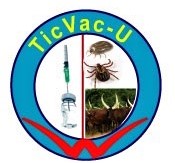Everything you need to know about TicVac-U
In the following article, we give an overview of what the new anti-tick vaccine known as TicVac-U is, how it works against tickborne diseases like EastCoastFever (ECF) and Babesiosis, its efficacy against some of the most prevalent tickborne diseases in Uganda and many other common queries. Essentially, everything you need to know about the TicVac-U anti-tickvaccine.
What is TicVac-U?
TicVac-U ™ is a commercial anti-tick vaccine developed in Uganda to address the challenge of ticks and tick-borne diseases affecting livestock in the country. It was developed using vaccine candidate proteins from local ticks which have been exploited to produce an anti-tick vaccine that can effectively immunize local cattle to prevent EastCoastFever (ECF) and Babesiosis, the two most prevalent and economically important tickborne diseases affecting Uganda's cattle population.
The tickvaccine was developed by Professor Margaret Saimo-Kahwa, the main Principal Investigator in collaboration with scientists from MAK-COVAB and is the culmination of the anti tickvaccine development initiative supported by H.E. Gen Yoweri Museveni, the President of Uganda, to produce an effective, affordable and safe tickvaccine that will reduce acaricide use, and protect Uganda’s cattle from risk of acaricide resistant ticks.
How does the TicVac-U anti-tick vaccine work?
The mechanism through which the TicVac-U vaccine works against tickborne diseases like East Coast Fever (ECF) and Babesiosis is that once vaccinated, engorged ticks from TicVac-U immunized cattle perform poorly as they do not attain full weight in detachment, which results in tick eggs with low weight thereby affecting their hatchability.
In TicVac-U clinical trials, eggs from ticks that were detached from vaccinated cattle failed to hatch while ticks eggs from non-vaccinated control cattle groups, hatched extremely well. In other words, TicVac works by eliminating the reproductive capacity of ticks (hence no more ticks), killing existing ones (no more ticks) or directly controlling tick numbers on cattle.
Is TicVac-U effective against all Tick-Borne Diseases affecting Ugandan cattle?
There are three major tickborne diseases that affect cattle productivity in Uganda; EastCoastfever, Babesiosis, and Anaplasmosis. TicVac-U ™ is currently most effective against EastCoastFever, and Babesiosis although research is ongoing on other tick species as well but so far, the tickvaccine has shown effective cross-species protection.
This has been demonstrated in clinical trials against the two most common Tick-Borne Diseases in Uganda, where overall efficacy of TicVac-U vaccine candidate proteins for the R. appendiculatus vector - the brown ear adult ticks responsible for transmitting EastCoastFever (ECF), was 86%. For R. decoloratus, the most common tick species that transmit Babesiosis, TicVac-U efficacy was 53%.
The mechanism through which the TicVac-U vaccine works against EastCoastFever (ECF) and Babesiosis is that once vaccinated, engorged ticks from TicVac-U immunized cattle perform poorly as they do not attain full weight in detachment, which results in tick eggs with low weight thereby affecting their hatchability.
In TicVac clinical trials, eggs from ticks that were detached from vaccinated cattle failed to hatch while those tick eggs from cattle not vaccinated with TicVac-U hatched extremely well.
What Tick Borne Diseases does the TicVac-U vaccine immunize against?
Clinical trials show that TicVac-U ™ is currently most effective against EastCoastFever (ECF) and Babesiosis, the two most prevalent and economically important tickborne diseases affecting Uganda's cattle population.
How often should I immunise my cattle using the TicVac-U anti-tick vaccine?
Every 6 months for 1 year. A booster dose (third dose) may be given at least 1 year after completion of the primary immunization series if ongoing exposure or re-exposure to tick-borne EastCoastFever is expected.
Does using TicVac-U mean acaricides are no longer necessary?
Not at all. TicVac scientists recommend an integrated tick control program that involves continued spraying and dipping of cattle using acaricides even after immunisation, for the first 2 months after vaccination. This is because the full response to a vaccine does not occur for about 14-28 days after administration of the initial vaccine course.
But after this period, ticks will either start dying or if they don’t die, they will not produce the eggs or if they produce the eggs, they will not hatch to produce more ticks. So that means farmers firstly, need to vaccinate all the animals. Then continue the use of acaricides temporarily until herd immunity is achieved.
How much will TicVac-U cost upon commercialization?
Upon production, TicVac-U pricing will range between 4,000 to 6,000 UGX although this will be confirmed upon launch.
Is TicVac-U safe?
Yes. The TicVac-U ™ antitick vaccine is safe because, like most vaccines, it is a protein, made from vaccine candidate proteins for R. appendiculatus vector ticks- the brown ear adult ticks responsible for transmitting EastCoastFever (ECF), as well as R. decoloratus which is the most common tick species that transmit the Babesiosis TBD in Uganda.
Secondly, it is immunogenic in terms of antibody response meaning the vaccine works by stimulating a cow’s immune response against tick-borne antigens. Immunogenicity is a central aspect of effective vaccine development and TicVac-U fulfils this criterion. Thirdly, TicVac-U has passed intense clinical trials – both laboratory and field, testing both its efficacy as well as safety.
Will TicVac-U become available outside Uganda?
That's to be decided upon launch. Feel free to come back here for a news update.
